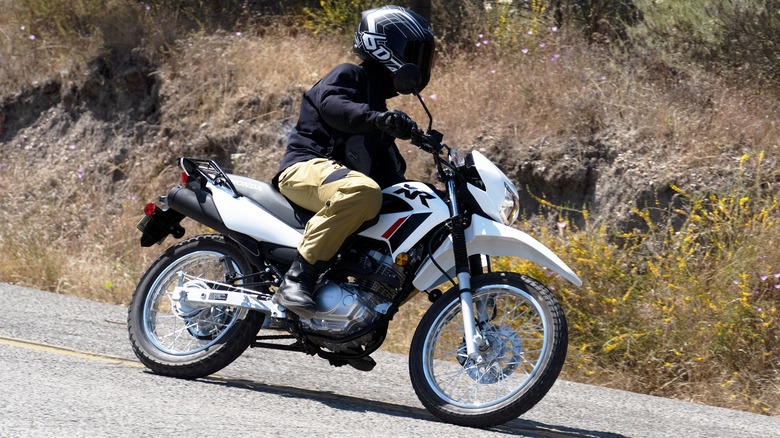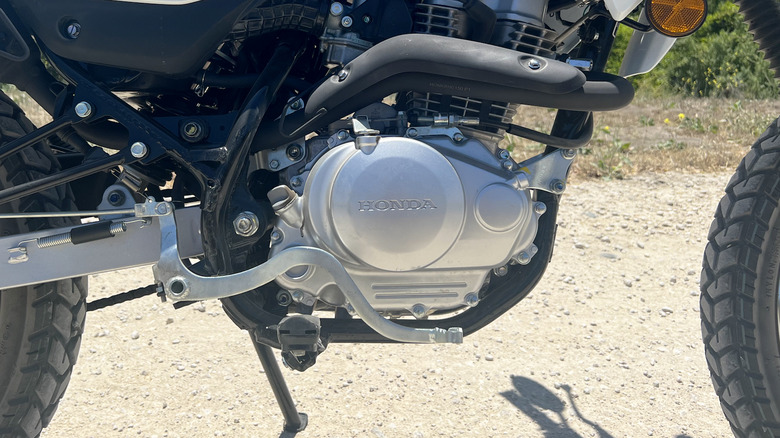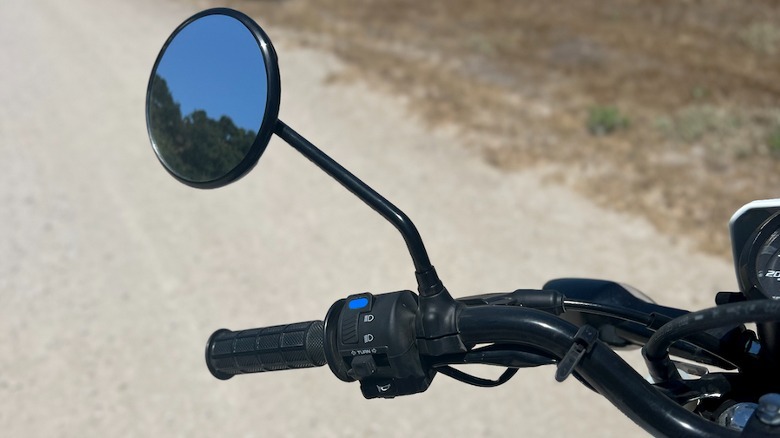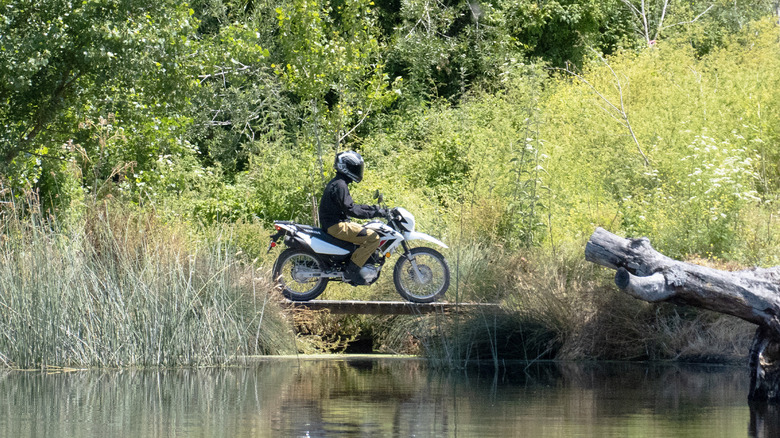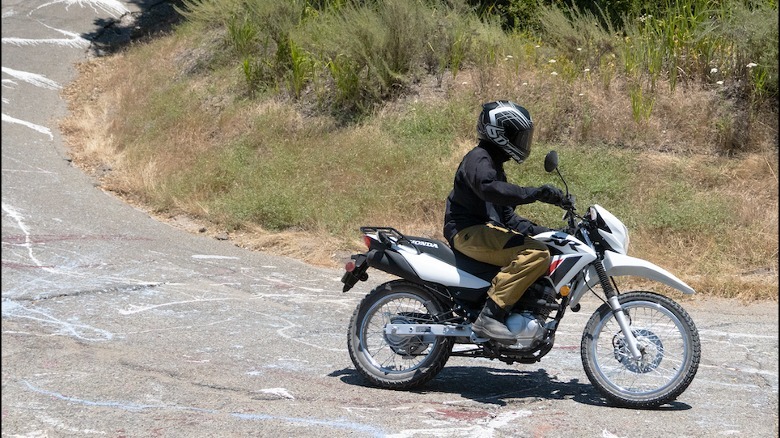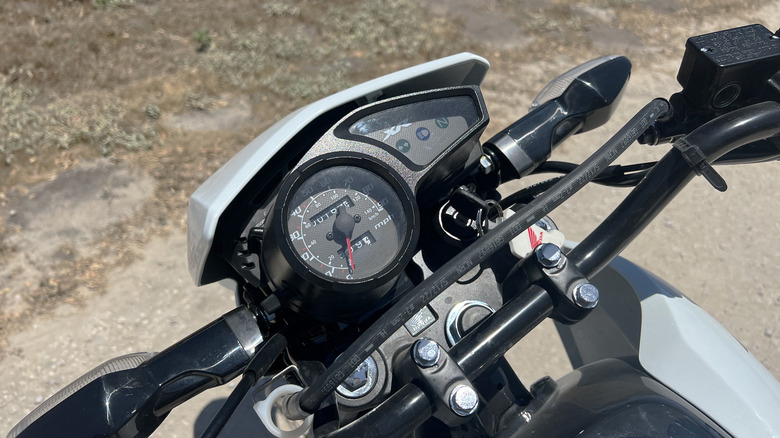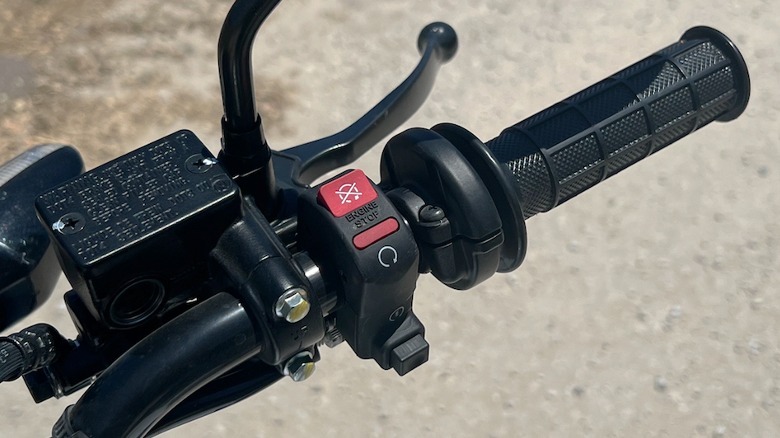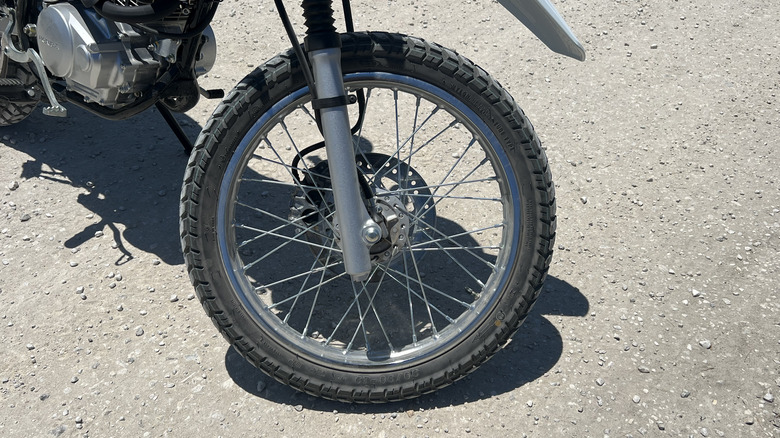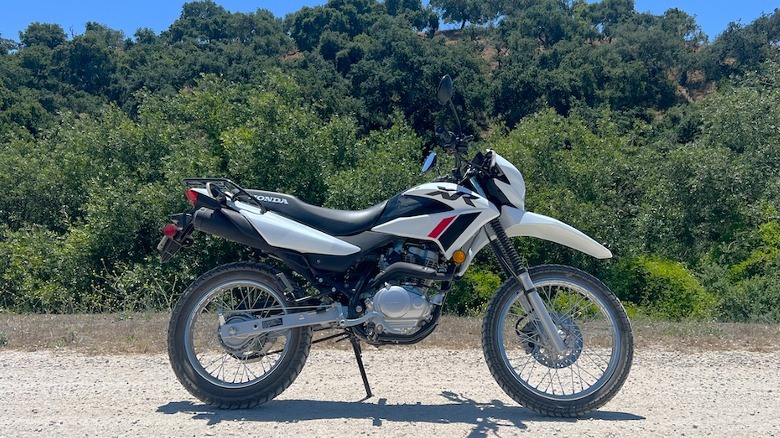2023 Honda XR150L First Ride: Sub-$3,000 Motorcycle Brings Smiles And Caveats
On the rolling roads outside of Solvang, just over the San Marcos Pass from Santa Barbara, I edge forward on the Honda XR150L's seat at full throttle, running out of revs in fifth gear. I lean just a tad into a downhill bend, easing into the brakes and downshifting to fourth before I sneak a glance at the speedometer. I'm only going 45 miles an hour. And going back uphill, I probably should have shifted into third because the little dual-sport has run entirely out of juice this low in the rev range.
Oh well, a quick pop of the shift lever and the 149cc single slams back up into the power band—only to keep struggling noticeably up the grade. Such is life on the XR150L, a fun entry-level dual-sport available for the first time in the US for model year 2023, just begging for all gas and no brakes at all times. Aero slows down the upright profile enough above 35 miles per hour anyway, and though Honda claims the bike is "highway-speed capable," in a solid day of riding I only got above 70 miles an hour once, in a full tuck on a downhill with a tailwind while drafting behind a first-gen Kia Sorento.
But top speed is definitely not the XR150L's top priority. Instead, keep in mind that no other full-sized dual-sport from a major OEM can match the XR150L's $2,971 starting price tag. Yes, tack on an additional $300 in destination and freight, plus tax and potential accessories, and buyers will probably leave the dealer nearer to $4,000. But for puttering around town, at the beach, or running around a ranch on the occasional dirt track, nothing else new on the market beats the price and, hopefully, the reliability of the new XR150L.
A distant treat finally destined for America
Of course, the XR150L will look familiar to anyone who has traveled abroad, since Honda has built the little dual-sport for foreign markets since 2003. Popular in Thailand and Latin America, bikes headed for the American market will use parts manufactured in China and then assembled in Mexico.
Honda flipped the script by bringing the XR150L to the U.S. hoping to target a younger crowd and beginner riders with low power, easy rideability, and the prospect of time-tested reliability that demands minimal maintenance (always a concern for new riders). The carbureted 149cc four-stroke single cylinder can only manage 12.5 horsepower, but such negligible output and displacement helps to keep total weight down to only 282 pounds. A 32.8-inch seat height comes in a little higher than average for a road bike, if lower than most dirt bike saddles, but soft padding and easy maneuverability thanks to the low overall weight makes tip-toeing the bike around a cinch.
Even the 2.8-gallon fuel tank might sound small on paper, but that tiny mill gets such good fuel economy that Honda claims a tested range of 346 miles—if riding fast or hard at higher revs, more like 200-250 miles per tank seems much more realistic.
Ground clearance of 9.6 inches and a standard tubular steel rear rack allow for exactly the kind of daily utility in every scenario that Honda envisions for the XR150L. Meanwhile, no bike can hit any market these days without a host of accessories, the most popular of which in this case include a skid plate and optional luggage for increased storage.
Dirt riding on a tiny dual-sport
Honda also wanted to demonstrate the XR150L's off-road capability, and so set up a series of circuits around a ranch outside of Solvang for the media test day. With little dirt riding under my belt since childhood, I immediately appreciated what felt like minimal power on road but actually helped keep me from spinning the rear tire, which bridges the gap between prioritizing road and dirt traction.
Only 12.5 peak horsepower also means the engine will stall easily off a start without a good amount of throttle but luckily, on-road and off, smooth and communicative clutch action creates an impressive amount of modulation after an initial period of acclimation. Off-road, I avoided asking too much of the 240-millimeter front disc brake. On the other hand, the cable-actuated (non-hydraulic) 110mm drum brake that barely feels effective at all on asphalt all of a sudden provided the perfect level of restraint to keep my tail end from skittering out.
The suspension, on the other hand, leaves a bit to be desired in almost every scenario. A telescopic fork allows for 7.1 inches of front travel, while the single rear shock absorbs bumps until the rear reaches its max of 5.9 inches of travel. On wavier or clunky roads, the largest impacts almost vanish, but most smaller imperfections reverberate through the frame. In softer dirt, the setup performs better but still lacks the refinement of more complex—and therefore heavier and more expensive—ADV or dedicated dirt bikes.
But cheap for cheapness' sake makes perfect sense, even if beefy would never be the way to describe the XR150L up close and personal. Visibly rough welds and cheap black paint on the frame perfectly complement zip ties on the handlebars and the choice of either black or white plastic panels (I clearly preferred white, for the more quintessential 90s aesthetic that such a back-to-basics bike inhabits).
An entry-level bike for beginner and experienced riders alike
For new riders, the XR150L offers a cheap way to get started either commuting or ripping around the ranch. And calling a bike "rudimentary" in this case definitely counts as a positive. Electric ignition fires the single piston up eventually, though a few yanks on the throttle with an ear on the exhaust definitely helps. I never needed to futz with the choke on a cold morning in Solvang and presumably that single carb will never require adjustment—if it does, at least only one cylinder means no syncing necessary.
The XR150L's tiny gauges also include no tachometer, so new riders will need to learn to ride by sound and feedback rather than keeping an eye on redlines or gear selection. That's almost a good thing, in my mind. Whether the engine even has a redline is a question, though, since power just sort of dies out as the buzzing increases, rather than the lurching or blattering of hard fuel cutoff. (Faux carbon fiber on the gauges undoubtedly contributes at least a few grams, if not horsepower, to the low weight, too.)
Make no mistake, the XR150L is not even close to fast—but it is definitely a bundle of fun. On asphalt, just a shimmy of my hips produced easy S curves, less leaning off with countersteer, more leaning on and with the frame given the narrow, chunky tires. In the dirt or even sand portions, sitting back shifted our combined center of gravity over the rear wheel just enough to prevent any truly sketchy moments.
The simple appeal of a simple motorcycle
For commuters, the XR150L can just barely pull away from traffic at a red light. Such shenanigans require a concerted combination of reflexes and concentration, though. Luckily, the narrow and nimble character inspires confidence while lane-splitting coming up to a stoplight. Commuting on a freeway might be another story, since the single cylinder produces a sewing-machine cacophony at wide-open-throttle the whole time and true highway speeds require a bit of help.
But even for hours of riding around Solvang, Honda seemed plenty confident the XR150L can handle WOT ad infinitum. Related to the XR650L and after two decades abroad, every bug should be well sorted out by now. (Honda decided to keep the XR150L's nomenclature familiar, rather than adopting the CRF300L's alphanumerals for example, to establish the bike as something entirely unique in the new American market.)
To that end, the XR150L gets 19-inch front and 17-inch rear wheels, as opposed to the smaller Yamaha TW200. And the overall ergonomics of this full-sized bike, with foot pegs fairly far forward, kept everything on my body from getting sore other than my right hand, which admittedly began to cramp a bit after pulling down hard all day long.
More serious riders may feel the urge to buy an XR150L and then bolt on better forks or more dirt-focused tires. But that kind of an idea essentially abandons the simple appeal of picking up the cheapest dual-sport available from a major manufacturer and then ripping around contentedly on the back of an otherwise perfect little putt-putt.
